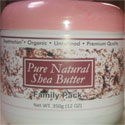If you’re new here, you may want to subscribe to my RSS feed. Thanks for visiting!This is my latest guest post published at Africabusinesscommunities.com. Click here to read full post.
Self-Devpt. Nuggets™
…a multi-disciplinary blog for people passionate about reaching their goals! Subscribe by: RSS
Subscribe by: RSS

Fear Can Be Very Costly!
Warning: count(): Parameter must be an array or an object that implements Countable in /home1/tayoswdg/public_html/sdnuggets/wp-includes/class-wp-comment-query.php on line 399
Warning: count(): Parameter must be an array or an object that implements Countable in /home1/tayoswdg/public_html/sdnuggets/wp-includes/class-wp-comment-query.php on line 399
Leave a Comment
This latest issue of my Public Speaking Ideas newsletter is based on a true story. Names, dates and locations have been changed. Click here to read

Top 10 Ingredients Used in Livestock Feed
Warning: count(): Parameter must be an array or an object that implements Countable in /home1/tayoswdg/public_html/sdnuggets/wp-includes/class-wp-comment-query.php on line 399
Warning: count(): Parameter must be an array or an object that implements Countable in /home1/tayoswdg/public_html/sdnuggets/wp-includes/class-wp-comment-query.php on line 399
2 Comments
Do You Really Need Employees?
Warning: count(): Parameter must be an array or an object that implements Countable in /home1/tayoswdg/public_html/sdnuggets/wp-includes/class-wp-comment-query.php on line 399
Warning: count(): Parameter must be an array or an object that implements Countable in /home1/tayoswdg/public_html/sdnuggets/wp-includes/class-wp-comment-query.php on line 399
Leave a Comment
This latest issue of my Weekly Public Speaking Ideas Newsletter, was broadcast to email subscribers on Monday 10th September 2012. Click here to read
A Key To Livestock Farming Success
Warning: count(): Parameter must be an array or an object that implements Countable in /home1/tayoswdg/public_html/sdnuggets/wp-includes/class-wp-comment-query.php on line 399
Warning: count(): Parameter must be an array or an object that implements Countable in /home1/tayoswdg/public_html/sdnuggets/wp-includes/class-wp-comment-query.php on line 399
Leave a Comment
Many livestock farmers out here frequently start out with little knowledge of animal nutrition. And yet some successfully manage their businesses with profit for reasonable periods of time. Seasoned extension specialists and farm business support experts have variously made this observation over the years. The above shows just how much potential exists to do even […]

When Client Conversations Require Fees
Warning: count(): Parameter must be an array or an object that implements Countable in /home1/tayoswdg/public_html/sdnuggets/wp-includes/class-wp-comment-query.php on line 399
Warning: count(): Parameter must be an array or an object that implements Countable in /home1/tayoswdg/public_html/sdnuggets/wp-includes/class-wp-comment-query.php on line 399
Leave a Comment

A Marketing Secret You Need To Know
Warning: count(): Parameter must be an array or an object that implements Countable in /home1/tayoswdg/public_html/sdnuggets/wp-includes/class-wp-comment-query.php on line 399
Warning: count(): Parameter must be an array or an object that implements Countable in /home1/tayoswdg/public_html/sdnuggets/wp-includes/class-wp-comment-query.php on line 399
Leave a Comment
Browse the new WordPress version of my 6 year old Farm Business Support Service website. Click here to visit the new site Note that it’s still being updated, and some links will take you back to the old site. FEEDBACK: If you have any ideas, suggestions or comments about the new site, send them to […]

5 Proven Ways to Boost Farm Profits Without Raising Prices
Warning: count(): Parameter must be an array or an object that implements Countable in /home1/tayoswdg/public_html/sdnuggets/wp-includes/class-wp-comment-query.php on line 399
Warning: count(): Parameter must be an array or an object that implements Countable in /home1/tayoswdg/public_html/sdnuggets/wp-includes/class-wp-comment-query.php on line 399
Leave a Comment
My latest (above titled) guest post is now live at http://africabusinesscommunities.com/features/5-proven-ways-to-boost-farm-profits-without-raising-prices.html

The Secret to Employee Loyalty
Warning: count(): Parameter must be an array or an object that implements Countable in /home1/tayoswdg/public_html/sdnuggets/wp-includes/class-wp-comment-query.php on line 399
Warning: count(): Parameter must be an array or an object that implements Countable in /home1/tayoswdg/public_html/sdnuggets/wp-includes/class-wp-comment-query.php on line 399
4 Comments
This is the latest issue of my Weekly Public Speaking IDEAS Newsletter: The Secret to Employee Loyalty

NEW PAGE: Tayo’s Guest Posts
Warning: count(): Parameter must be an array or an object that implements Countable in /home1/tayoswdg/public_html/sdnuggets/wp-includes/class-wp-comment-query.php on line 399
Warning: count(): Parameter must be an array or an object that implements Countable in /home1/tayoswdg/public_html/sdnuggets/wp-includes/class-wp-comment-query.php on line 399
Leave a Comment
Career Development, Entrepreneurship, Farm Biz, General, Parenting, Public Speaking, Self-Development, Writing/Blogging
I’m a multipreneur, and SD Nuggets is designed to be a multi-disciplinary blog. So, expect to see links on the new Tayo’s Guest Posts page to my guest posts published on blogs in different niches. If you run a high profile blog, website or print publication, and would like me to write for you, get […]








Warning: count(): Parameter must be an array or an object that implements Countable in /home1/tayoswdg/public_html/sdnuggets/wp-includes/class-wp-comment-query.php on line 399
Warning: count(): Parameter must be an array or an object that implements Countable in /home1/tayoswdg/public_html/sdnuggets/wp-includes/class-wp-comment-query.php on line 399
Leave a Comment
Entrepreneurship, Farm Biz